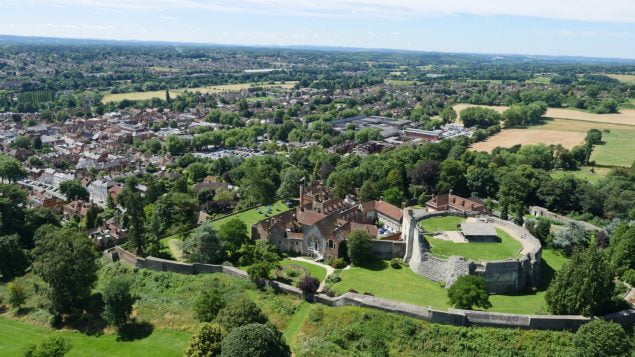What was the result of the referendum?
Of the 7,848 people who voted in the referendum, 95.5% said they want Waverley Borough Council to use the Neighbourhood Plan to help it decide planning applications in the neighbourhood area.
The Farnham Neighbourhood Plan will now be officially adopted by Waverley Borough Council and used to help decide planning applications in the Farnham area.
What is the Neighbourhood Plan?
The Farnham Neighbourhood Plan is a community-led document produced by the community for the community to:
- Influence planning in the area
- Develop shared vision for the area
- Choose where new housing goes using previously developed land
- Identify and protect important local green spaces
- Influence what new buildings should look like.
What is a Neighbourhood Plan and a Local Plan?
A Local Plan includes strategic policies for the whole of the borough. It allocates the numbers of houses required for each area.
The Farnham Neighbourhood Plan chooses specific sites for the housing allocation. It agrees local policies to sustain local character.
What has changed in the reviewed Neighbourhood Plan?
The Local Plan examination in 2017 resulted in 450 additional dwellings being added to Farnham’s target to be delivered by 2032. Planning permission has already been granted for 2,083 dwellings.
Five sites have been added to accommodate the additional need:
- Cobgates
- Kimbers Lane
- Centrum
- Surrey Sawmills
- University for the Creative Arts (houses returning to the rental market as a result of purpose-built student accommodation)
The end of the Plan has been adjusted by one year (from 2031 to 2032), to align with the adopted Local Plan.
The Built-Up Area Boundary has been slightly adjusted in include two sites granted at appeal.
Maps have been updated to include new evidence base.
There are no new policies and no policies have been deleted.
There was strong support in the first Farnham Neighbourhood Plan referendum so why was there another one?
As the number of houses had increased significantly, we were required to hold another referendum. If there is strong support for the updated Neighbourhood Plan, it will carry more weight in the planning process and at appeal.
What was the referendum question?
The question was set down by government and was: “Do you want Waverley Borough Council to use the Neighbourhood Plan for Farnham to help it decide planning applications in the neighbourhood area.
Why are there 2,780 homes proposed in the Neighbourhood Plan?
This is to meet Farnham’s share of the government target of new homes required up to 2032.
How many homes have been given permission already?
2,083, so there are 697 to go.
Would a ‘no’ vote have meant fewer houses?
No, the target of 2,780 will remain the same. The numbers have been set by the government.
Without a plan, who will decide where housing will go in Farnham?
Without a Neighbourhood Plan, decisions will be made by Waverley Borough Council (the planning authority) and planning inspectors with no input from Farnham people.
Why is the Coxbridge site in the Neighbourhood Plan?
Waverley’s Local Plan was adopted in 2018 and the Coxbridge site was included as a strategic site. It will be developed and the Neighbourhood Plan (if adopted) will be used to influence the design of the site.



